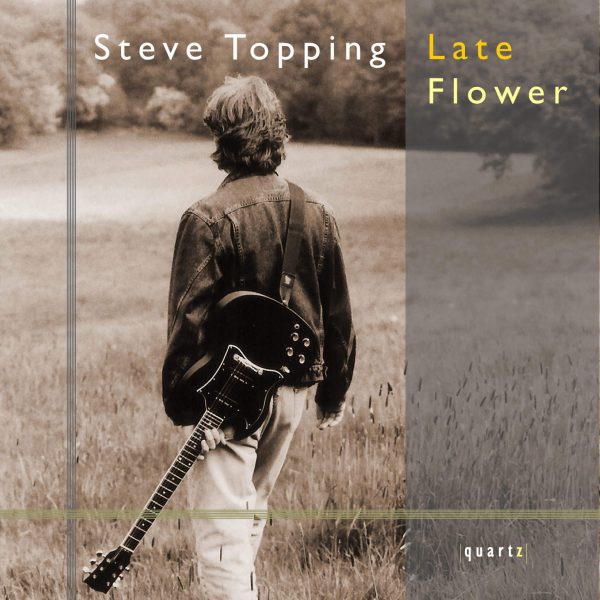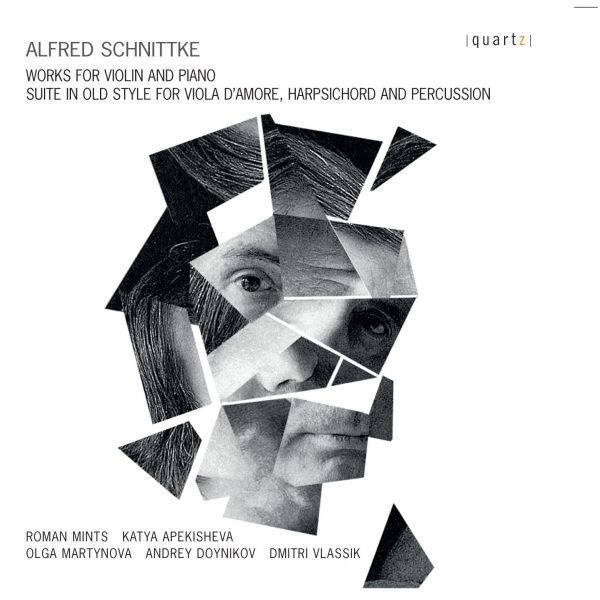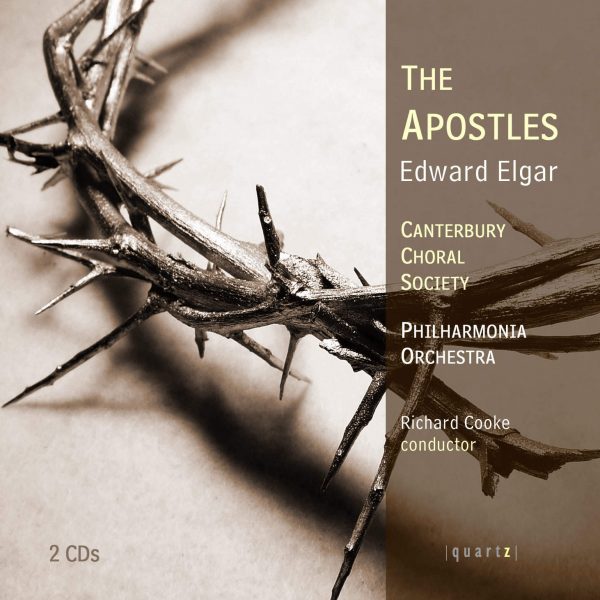Prokofiev: Works for Violin and Piano
£5.99 – £11.99
Sergei Prokofiev 1891-1953
Violin Sonata No. 1 in F Minor Op. 80
Five Melodies Op. 35 BIS
Five Pieces from Cinderella
Suite from Romeo and Juliet
Lisa Oshima, violin
Stefan Stroissnig, piano
About This Recording
“This is a very special sonata.”
With a serious expression my professor, Dr. Andrievsky, spoke these words to me. From his voice I sensed a feeling of sorrow. It happened when I first began studying Prokofiev’s Sonata No.1, I thought I had understood Russia under Stalin from various written sources and films but then every time I had a lesson, I was crushed by the people’s great sadness, which welled up from the sonata. Every corner of the music revealed suffering or screaming or despair or deception. It took Prokofiev eight years to complete the sonata, which expresses not only his own feelings but those of the people who lived through that era.
By contrast Cinderella and Romeo and Juliet overflow with liveliness and joie de vivre. Every time I play them in the orchestra pit, my heart dances to the elegant sounds and expression of love.
These works by Prokofiev never fail to grab my heart.
I hope you will enjoy the multifaceted versatility of Prokofiev. Finally I would like to thank all those who helped make this recording happen.
Lisa Oshima
Sergei Prokofiev began work on his Violin Sonata in F minor in 1938, but wrote to fellow composer Nikolai Myaskovsky on 12 June 1943 that he was finding it “difficult” to make progress with the work, the sombre tone of which may reflect the political turmoil of the time. The sonata’s dedicatee, David Oistrakh, encouraged Prokofiev to finish the piece; Prokofiev had already arranged his Flute Sonata for Oistrakh, and the two met, along with pianist Lev Oborin, to hear the new Violin Sonata at Prokofiev’s home. The composer described each of the movements before playing them through, without hesitating between movements at the piano. According to Oistrakh, Prokofiev’s technique wavered on occasion, but the halting nature of his performance made it all the more poignant.
Oistrakh and Oborin gave the Violin Sonata’s premiere on 23 October 1946 at the Moscow Conservatory, with a follow-up concert on 25 October attended by Prokofiev. However, the composer was disappointed by their interpretation, lamenting afterwards that they had played the second and final movements, “like two old professors”. This prompted the composer to invite the pair round in November for a coaching session, and he made further amendments to the score to ensure every expressive nuance be heard.
The work’s reception was more fulsome, with the daunting figures of the Stalin Prize Committee calling the sonata, “the pride of Soviet music”, and composer Gavriil Popov hailing it as “truly brilliant”. In the Russian state newspaper Pravda, the sonata was interpreted as a “meditation on the fortunes of the Motherland”, and in 1947 the work won Prokofiev the First Class Stalin Prize. Prokofiev continued to tweak the score, which was published in 1951. In 1954 Oistrakh said of performing Prokofiev’s music:
“…nothing can be omitted, not a single turn of the melody, not a single modulation. It requires the strictest attention to every detail of expression, a fine, but not over-refined, execution of each individual intonation, as in the case of well-enunciated singing.”
In the opening movement, the piano’s powerful seventh chords underpin the violin’s swift, muted runs, which are marked freddo (literally, ‘cold’). Prokofiev thought of this passage as conjuring up an “autumn evening wind blowing across a neglected cemetery grave”. This material returns in the finale, with chilling effect. Another very precise description prefaces the second movement, Allegro brusco – ‘brusque’; during rehearsals Prokofiev encouraged the performers to bring out the work’s aggressive qualities. Oistrakh performed two movements from the sonata at Prokofiev’s funeral in 1953: the first and the third – the two movements which had been spared Prokofiev’s most severe criticism when Oistrakh had first performed them, years earlier.
Prokofiev’s Five Melodies, Op.35 were arranged for violin and piano by the composer himself. They had begun life in 1920 as wordless songs written for the soprano Nina Koshetz, to whom Rachmaninov had also dedicated his Op.38 songs in 1916. The particular qualities of her voice inspired both composers to respond with music of dreamy elegance, building to moments of passion.
For all its fairytale familiarity, Cinderella is, in Prokofiev’s hands, a work of deft sophistication. The work as a whole charts the trajectory of each character with remarkable subtlety and musical integration. Prokofiev set about working on the ballet in 1941, but shelved the project during the War years, after which he began to complete the orchestration. The composer wrote:
“What I wished to express above all in the music of Cinderella was the poetic love of Cinderella and the Prince, the birth and flowering of that love, the obstacles in its path, and finally the dream fulfilled. The fairytale offered a number of fascinating problems for me as a composer – the atmosphere of magic surrounding the Fairy Godmother, the 12 fantastic dwarves that pop out of the clock as it strikes twelve and dance chechotka [a tap dance] reminding Cinderella that she must return home; the swift change of scene as the Prince journeys far and wide in search of Cinderella; the poetry of nature personified by the four fairies symbolizing the four seasons…”
The Five Dances, adapted for violin and piano by Mikhail Izrailevich Fichtenholz, offer the listener snippets of the work as a whole. The Gavotte comes from Act One, when it is danced by Cinderella with just her mop for a partner. The Winter Fairy appears soon afterwards, along with other fairies representing the seasons, all of them part of the Fairy Godmother’s expansive entourage. The Passepied is one of several dances with which Act Two begins. The ball is well under way, and Prokofiev imbues the music with a certain degree of irony, gently satirising the pompous courtiers. The quick-fire Mazurka is danced just before the Prince arrives, and soon afterwards Cinderella is whisked into the Grand Waltz, when she dances at last with the Prince. This piece is based on themes initially heard when Cinderella was dreaming of just such an occasion. For the Suite, the movements are rearranged to create a series of dance movements which evoke the ballet’s character rather than reflecting its chronology.
The Soviet ballerina Galina Ulanova, who danced Juliet in the Kirov production of Romeo and Juliet, considered Prokofiev to be an intimidating figure:
“I do not remember exactly when I first saw Prokofiev, I only know that at some point during the rehearsals of Romeo and Juliet I became aware of the presence of a tall, somewhat stern-looking man who seemed to disapprove heartily of everything he saw and especially of our artists. It was Prokofiev.”
Yet Prokofiev praised the Kirov production, explaining his reservations in terms of the choreography rather than the dancers themselves:
“The Kirov Theatre produced the ballet in January 1940 with all the mastery for which its dancers are famed – although with some slight divergences from the original version. One might have appreciated their skill more had the choreography adhered more closely to the music. Owing to the peculiar acoustics of the Kirov Theatre and the need to make the rhythms as clear-cut as possible for the dancers I was obliged to alter a good deal of the orchestration.”
Prokofiev finished the first version of Romeo and Juliet in 1935, with the premiere taking place in a provincial theatre in Brno, in what is now the Czech Republic. He went on to arrange two suites from the ballet music (the full score comprises 52 numbers), with this version for violin and piano arranged by Baich and Fletzberger.
In the Introduction, Prokofiev’s distinctive harmony and sinuous melodies teeter between poignancy and hope, reflecting the same tussle found in Shakespeare’s play. In his working notes to the ballet, Prokofiev vividly described ‘The Young Juliet’: “Juliet enters running. She is only 14 years old. She jokes and frolics like a little girl, and does not want to get dressed for the ball. Still, the Nurse manages to get her into her ball-gown. Juliet in front of the mirror. She sees a young woman in it and falls to thinking. Juliet runs out.”
During the famous ‘Dance of the Knights’, the Montagues and Capulets swagger to music full of threat and foreboding. Prokofiev imagined the knights as “ponderous, in armour. The ladies dance. The men dance. Juliet dances in a formal and indifferent way with Paris. Romeo watches admiringly; gradually the general dancing starts up again.” In contrast, Prokofiev reserves some of his most sensual music for the ‘Balcony Scene’, when “Juliet enters in her nightgown. She searches for a kerchief or a flower dropped during her meeting with Romeo. Romeo appears from behind a column. The love dance begins.”
For the ‘Dance of the Five Couples’, Prokofiev specified that, “… the movements are tiny and very delicate. A cheerful procession with a brass band makes its way along the street. The dance resumes.” In ‘Mercutio’, Prokofiev’s skittish writing portrays the playful way in which “Mercutio greets [Romeo] and teases him.”
Prokofiev’s insight into the scene in which ‘Romeo decides to avenge Mercutio’ is telling: “Unlike the duel between Tybalt and Mercutio, in which the opponents did not take account of the seriousness of the situation and fought because of their high spirits, here Tybalt and Romeo fight furiously, to the death.” The composer’s treatment of this subject-matter is unrelenting, with 15 bars of repeated chords, each followed by silence. Leonid Lavrovsky, who choreographed the Kirov production, recalled: “… Prokofiev struck one and the same chord [on the piano] 15 times in succession. I could not help asking what action he visualised there and what exactly these chords meant. ‘Nothing,’ he said, obviously nettled. ‘But what am I supposed to do on stage at this point?’ I persisted. ‘Whatever you like’.” —Joanna Wyld, 2016
Track Listing
-
Violin Sonata No. 1 in F Minor Op. 80
- Andante assai
- Allegro brusco
- Andante
- Allegrissimo Five Melodies Op. 35 BIS
- Andante
- Lento, ma non troppo
- Animato, ma non allegro
- Allegretto leggero e scherzando
- Andante non troppo Five Pieces from Cinderella
- Grand Waltz
- Gavotte
- Passpied
- Winter Fairy
- Mazurka Suite from Romeo and Juliet
- Introduction
- Julia
- Tanz der Ritter
- Balkonszene
- Tanz der Paar
- Mercutio
- Kampf und Tybalts Tod




